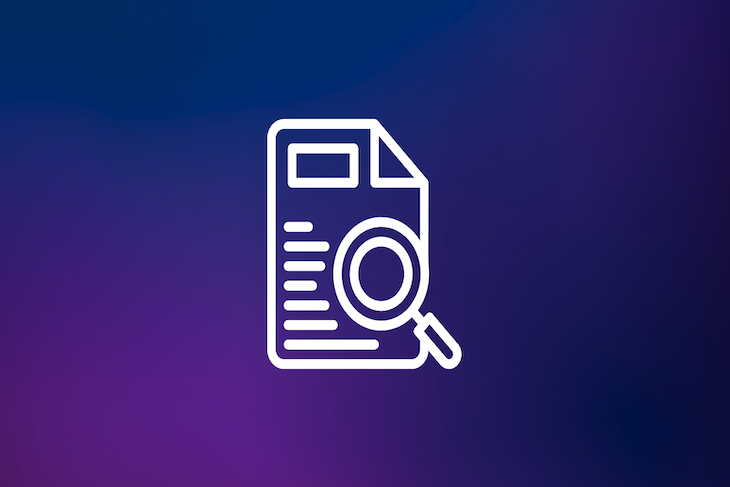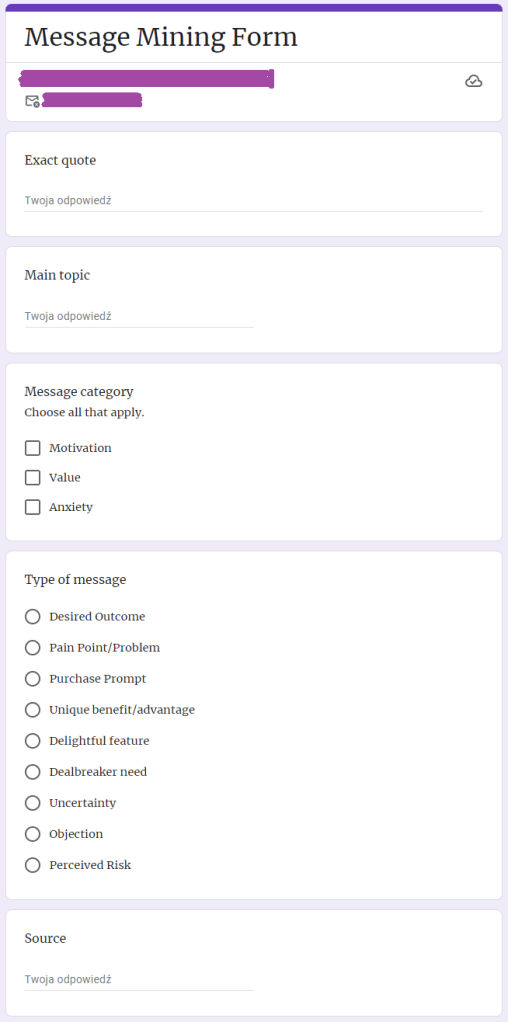
Copywriting is an essential part of every design initiative. After all, the ultimate goal of design is to communicate a specific message to users and guide them through the user journey. There’s hardly a more effective way to do that than with actual words.
But how do you actually create a meaningful, captivating copy that grabs users’ attention and helps your conversion rates?
One way to approach this challenge is to use a message-mining technique. It’s a relatively simple method that can 10X the effectiveness of your copy — and believe me, I’m not exaggerating.
In simple words, message mining is a process of sourcing the Internet and other available sources to understand how your target audience perceives your offerings, as well as similar products or services and the language they use.
You later use this information to build your own copy.
Message mining works because:
Before jumping into message mining, let’s first understand a few distinct types of copies. This understanding will be handy throughout the message mining process.
Having worked in copywriting for several years now, I’ve recognized three primary categories of copies based on their target focus:
A motivation-based copy answers ‘why’ potential customers want to try your offering. We use motivational copy to reinforce the reason to buy our product or service.
Motivation copies can be segmented further based on their focus points. I’ll use the example of a financial planning product to talk of these:
A value-oriented copy is about the messages highlighting why your solution helps satisfy the motivation (or solve the problem) and how it’s better than the alternatives available.
This type of copy reinforces why your product is the right choice. Value copies have three subcategories, too, and I’ll refer to the financial planning product again:
Anxieties are reasons potential customers might not proceed through the user journey. These include uncertainties, potential objections, and perceived risks.
A great anxiety-based copy will address these anxieties and make users feel safe when taking the next steps.
For example, if you identify that most potential customers worry about your credibility, use claims such as “Trusted by XYZ companies” or mention key partners you work with.
Now, let’s examine message mining more closely to see how it can help us create copy that addresses our users’ motivation, value, and anxiety.
Start with creating a list of meaningful keywords to help you find quotes from your customers later.
These keywords might be related to your particular brand and product, the product type, competitive brands, etc.
For our financial planning example, these could be:
The second step is to use the keywords to look for customer quotes online. To do this, look at online reviews and complaints (on Amazon, Trustpilot, Yelp, etc.) or online forums (like discussions on Reddit).
You can also look at specific products (your or your competitor’s) and the problem.
For example, if you are building a language learning app, don’t just look at discussions about Duolingo or Babbel, but also research how users talk about language learning itself.
For our financial planning product, this could include search queries such as “challenges of saving for retirement.”
Whenever you find a relevant quote, collect it immediately.
I recommend using a Google Form to collect quotes into a spreadsheet. It will make it easier to categorize and prioritize your voice of customer data.
Feel free to borrow this Google Form template to simplify the process:

I recommend collecting 20-30 quotes for each subcategory. That should give you roughly 200 to 300 quotes. The more, the better.
But, of course, if you are short on time or working on a niche product, working with 50 quotes is better than ideating copy out of thin air.
Here’s an example I found when looking for YNAB reviews to understand the customer’s voice regarding financial planning products:
Exact quote — “Our net worth has almost doubled in the 4 years my wife and I have been using YNAB, and we have high confidence that we are well-funded for emergencies and routine (but significant) expenditures that will occur. Biggest thing YNAB gives you is control and confidence. You know where every penny (or pence!) is, you can be deliberate about how it’s used, and you’ll know you are prepared financially for the eventualities that life will throw your way.”
Main topic — Net worth and confidence
Message category —Value
Type of message — Desired outcome
If you pasted the quotes directly to a spreadsheet or other place, it’s time to categorize them, that is, assign the topic theme and categories.
If you used the Google Form I shared, your quotes should already be categorized, but you should double-check for cohesiveness.
To categorize, I try to think along three lines:
The next step is to prioritize the quotes you mined. I suggest you categorize them like this:
1 – Main messages to use
2 – Messages that might work in some cases
3 – Messages to ignore
There is no need to be scientific; you can use your gut feeling here.
That’s why I recommend one person do the initial message mining—it makes further prioritization easier if one person has the context of all collected quotes in the back of their head.
Do the prioritization for each subcategory so that each has at least a few quotes scored as 1.
Lastly, consider borrowing exact quotes from your customers.
No one can create a better copy for your users than the users themselves. If you spot some truly memorable and powerful quotes, swipe them and put them in the backlog of copy to use on your website.
Let’s examine the copy we found in the third step more closely and look for fragments we could swipe:
Our net worth has almost doubled in the 4 years my wife and I have been using YNAB, and we have high confidence that we are well-funded for emergencies and routine (but significant) expenditures that will occur. Biggest thing YNAB gives you is control and confidence. You know where every penny (or pence!) is, you can be deliberate about how it’s used, and you’ll know you are prepared financially for the eventualities that life will throw your way.
Out of this single review, we can borrow three powerful messages:
See? You don’t even have to write the copy yourself. You can just copy-paste the words of your target group.
After the message mining exercise, you should have a list of quotes and key messages revolving around the motivations, values, and anxieties, and some quotes to use directly.
That’s a perfect start.
Now, whenever you need to write a copy, look for related subcategories and either reuse collected quotes or write your own copy based on the main themes of the messages you captured.
For example, if you need to write a feature list, look at all value-related quotes and reuse them in your copy.
If you need to address anxieties on your checkout page, address the most frequently mentioned uncertainties, objections, and perceived risks.
The odds are that this copy won’t be perfect from day one. You may need to edit it, test it with users, rewrite it based on results, and repeat. Copy is just one of those elements that should be regularly tested and optimized.
Regardless, using message mining to create your first draft puts you much farther ahead than guesstimating!
LogRocket's Galileo AI watches sessions and understands user feedback for you, automating the most time-intensive parts of your job and giving you more time to focus on great design.
See how design choices, interactions, and issues affect your users — get a demo of LogRocket today.

Small actions can have large consequences in complex systems. Here’s how UX designers can manage dependencies so users feel informed and in control rather than blocked or blindsided.

This article examines when hero sections are necessary in digital products, when they create friction, and how to evaluate them using UX goals, primary actions, user flow impact, and real-world alternatives.

AI speeds up tasks like research synthesis, ideation, and first-draft wireframes, but it can’t replace clarity, taste, or decision-making. Here’s a grounded look at what AI actually does well in UX right now.

Discover how to craft UX-friendly hero sections with examples, design tips, and strategies that drive engagement and conversion.